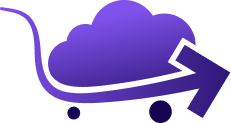In today’s digital age, Facebook conversion tracking is essential for measuring the effectiveness of Facebook ads, by tracking the actions people take after viewing them. This tool is pivotal for businesses aiming to optimize their return on ad spend (ROAS) and make strategic decisions to refine their advertising strategies. With over 1.6 billion unique users on Facebook, the platform’s unparalleled data collection and ad targeting capabilities offer advertisers a unique opportunity to reach a broad audience through meticulously crafted campaigns, without necessitating a shift in marketing approach.
Utilizing tools such as the Facebook Pixel, Facebook API and custom conversions, advertisers can mine valuable insights about website visitors, track specific actions taken on their site, and consequently refine their strategies in your ads campaigns for improved effectiveness. This article aims to demystify Facebook conversion tracking, including how to set up the Meta Pixel, leverage custom conversions and standard events, and analyze tracking data to optimize target conversions on Meta. By following a step-by-step approach, businesses can enhance their Facebook advertising tracking, leading to more impactful advertising efforts and greater scalability.
Understanding Meta Pixel and Conversion API
To effectively track and optimize conversions on your website, leveraging both the Meta Pixel and Conversion API is crucial. Here’s a deeper dive into understanding these tools and how they can be utilized to enhance Facebook conversion tracking:
Meta Pixel: A Foundation for Tracking
- Installation and Management:
- The Meta Pixel is integrated into your website by embedding a piece of JavaScript code on every page you wish to track. This can be efficiently managed through platforms like Google Tag Manager.
- Verification: Utilize tools like the Facebook Pixel Helper (a Google Chrome extension) to ensure correct installation and functionality.
- Tracking and Optimization:
- Data Collection: Through cookies, the Meta Pixel tracks user interactions on your website, from page views to specific actions like purchases or form submissions.
- Conversion Tracking: Actions tracked by the Pixel appear in Facebook Ads Manager, allowing for detailed analysis of your conversion funnel and ROAS.
- Audience Building and Remarketing:
- Create targeted audiences for future ads based on user behavior captured by the Pixel, enhancing ad optimization and remarketing efforts.
Conversion API: Enhancing Data Accuracy and Security
- Server-Side Tracking:
- Unlike the Meta Pixel, the Conversion API sends event data directly from your server to Facebook’s, bypassing browser limitations and enhancing data security.
- Integration: Can be set up through various methods, including partner integration or manual implementation via Events Manager.
- Event Types and Customization:
- Multiple Event Types: Allows for the sending of a wide range of event types, offering more comprehensive tracking options.
- Customization: Provides the flexibility to control the data shared, improving ad targeting and optimization.
- Omnichannel Tracking:
- Offline Conversions: The API enables tracking of offline conversions, offering a more complete view of the customer journey.
- Platform Integration: Compatible with various platforms (e.g., Salesforce®, Shopify), facilitating enhanced marketing performance and data analysis.
Combining Meta Pixel and Conversion API for Optimal Results
- Utilizing both tools simultaneously provides a dual approach to tracking, combining the broad reach and ease of implementation of the Meta Pixel with the enhanced data accuracy and security of the Conversion API. This comprehensive strategy allows for a more detailed understanding of user engagement, enabling advertisers to optimize their ad campaigns more effectively.
By integrating these tools into your digital marketing strategy, you can gain valuable insights into user behavior, refine your targeting, and ultimately, achieve better conversion rates on Meta platforms.
Setting Up Meta Pixel for Conversion Tracking
To initiate the setup of the Meta Pixel for conversion tracking, the first step involves creating a Facebook pixel within the Facebook Events Manager. This process lays the groundwork for capturing valuable data about user interactions on your website. Follow these steps to ensure a smooth setup:
- Create the Pixel:
- Navigate to the Facebook Events Manager.
- Select the option to create a new Facebook pixel and follow the prompts.
- Once created, you will receive a unique pixel code.
- Install the Pixel Code:
- For manual installation, copy the pixel base code.
- Paste this code at the bottom of the header section of your website, just above the closing tag.
- If you’re not familiar with website coding, email the pixel code and installation instructions to your developer or website manager.
- Verify Pixel Functionality:
- Use the Facebook Pixel Helper, a Chrome extension, to check if the pixel is working correctly.
- Look for successful triggers and data capture to confirm installation.
After successfully integrating the Meta Pixel on your website, the next phase involves configuring it within your Facebook Business Suite or Ads Manager. This configuration is crucial for tracking conversions and optimizing your ad campaigns:
- Opt into Automatic Advanced Matching: This feature enhances the pixel’s data collection capabilities, allowing for more precise audience customization and improved tracking accuracy.
- Determine Conversion Events: Identify specific actions on your website that you wish to track, such as page views, item additions to the cart, or purchases.
- Create Custom Conversions: In the Events Manager, navigate to “Custom Conversions” to define these actions as conversion events. This step involves setting rules that specify when a conversion has occurred.
To finalize the setup, implement the conversion tracking code provided by Facebook for your custom conversions. This code snippet is crucial for the accurate tracking of defined conversion events. Additionally, utilize Facebook’s Test Events tool to verify that your conversion tracking is operational and accurate. This comprehensive approach ensures that your Meta Pixel is not only installed but also fully optimized for tracking conversions on your website, thereby enhancing your Facebook advertising strategy.
Leveraging Custom Conversions and Standard Events
To effectively leverage the capabilities of Facebook conversion tracking, it’s essential to understand and utilize the three primary methods of tracking conversions: Standard Events, Custom Events, and Custom Conversions. Each method serves a unique purpose and offers different advantages for tracking and optimizing your ad campaigns on Meta.
Standard Events:
- Predefined Visitor Actions: These are actions that Facebook recognizes as significant, such as ‘View Content’, ‘Add to Cart’, ‘Add Payment Information’, and ‘Purchases’. Standard events are crucial for enabling Facebook’s algorithm to optimize ad delivery towards achieving specific business goals.
- Implementation: To track Standard Events, utilize the
fbq('track')function within the Meta Pixel code. This function requires the event name and, optionally, a JSON object detailing additional parameters such as product IDs, categories, and quantities. - Parameters for Enhanced Tracking: Standard events support parameters that allow advertisers to include more detailed information about the event, enhancing the precision of tracking and targeting.
Custom Events:
- Tailored to Specific Needs: When predefined standard events do not align perfectly with your tracking requirements, Custom Events offer a flexible alternative. These are actions that you define based on the unique interactions users have with your website.
- Tracking Custom Events: Use the Pixel’s
fbq('trackCustom')function, specifying your custom event name and, optionally, a JSON object with additional parameters. This flexibility allows for a more nuanced understanding of user behavior and interactions on your site. - Custom Audiences: Beyond tracking, Custom Events can be used to create custom audiences for ad optimization, enabling more targeted and effective advertising strategies.
Custom Conversions:
- Effortless Tracking with URL Rules: Custom Conversions simplify the tracking process by using URL rules based on specific page visits, such as landing on a “Thank You” page after newsletter sign-up. This method does not require modifications to the Meta Pixel base code.
- Creation and Optimization: Created entirely within the Events Manager, Custom Conversions allow for the optimization of ad campaigns and the definition of custom audiences without additional coding. They leverage the data collected through Standard or Custom Events for more refined targeting.
- Maximizing Custom Conversions: With a limit of 100 custom conversions per ad account, it’s vital to prioritize and define conversions that are most critical to your marketing objectives. Insights on Custom Conversions can be accessed through Ads Insights, offering valuable data to further refine and optimize your ad campaigns.
By understanding and implementing these three methods of conversion tracking, advertisers can harness the full potential of Facebook conversion tracking to optimize their ad campaigns, tailor their audience targeting strategies, and ultimately, achieve better conversion rates on Meta.
Analyzing and Optimizing Your Tracking Data
Analyzing and optimizing your Facebook conversion tracking data is a continuous process that involves several strategic steps to ensure your ad campaigns are performing at their optimal level. Here’s a structured approach to refine your tracking data and enhance your advertising outcomes:
Strategic Account Structure and Bidding
- Account Structure: Ensure your campaigns are structured based on objectives rather than audience. This facilitates a clearer analysis of performance by objective.
- Bidding Strategy: Select the right bidding strategy (CPC, CPM, CPA) based on your campaign objective. This choice directly impacts your campaign’s ability to reach its goals efficiently.
Campaign Optimization Techniques
- Objective Definition: Clearly define your campaign objectives (brand awareness, traffic, engagement, conversions) and tailor your strategies to achieve these goals.
- Audience Expansion: Consider targeting parallel interests, influencers’ audiences, and competitors’ audiences to broaden your reach.
- Automation and Targeting:
- Utilize automation tools (automated rules, bid strategies) for campaign optimization.
- Target users at every funnel stage, from awareness to conversion, ensuring your message reaches potential customers at the right time.
- Content and Call-to-Action:
- Incorporate video content to capture attention and drive conversions.
- Add a clear CTA button to guide users towards the desired action.
Conversion Tracking and Event Configuration
- Conversion Tracking Insights:
- Monitor conversion data in Facebook Ads Manager to gauge the effectiveness of each campaign, ad set, and ad.
- Analyze key metrics such as conversion rate, cost per conversion, and ROAS to understand campaign performance.
- Event Configuration:
- Verify domains in Business Manager to confirm ownership of the conversion measurement site.
- Configure conversion events in Facebook Events Manager to accurately track website actions.
- Choose the correct conversion event for ad sets to optimize ad delivery and campaign success. Be mindful of prioritizing events, especially for iOS users who’ve opted out of app tracking, to avoid compromising campaign results.
By systematically analyzing and optimizing your tracking data, you can make informed decisions to allocate your budget more effectively, adjust targeting or creative elements, and refine your overall strategy for improved ROI. Remember, the landscape of Facebook advertising is dynamic, requiring advertisers to stay agile and responsive to data insights for continual campaign enhancement.
Conclusion
Throughout this exploration of Facebook conversion tracking, we’ve uncovered the integral role that Meta Pixel, custom conversions, and standard events play in optimizing ad campaigns. By methodically implementing and utilizing these tools, advertisers can harness the vast user base of Facebook to track user interactions with unprecedented precision. The tactical insights gained enable businesses to refine their advertising strategies, ensuring that every ad dollar spent is an investment towards achieving desired outcomes, be it enhancing brand awareness, driving website traffic, or boosting sales conversions.
Moreover, the importance of analyzing and optimizing tracking data cannot be overstated. Through continual evaluation and adjustment based on performance metrics, advertisers can maintain a competitive edge in the dynamic digital advertising landscape. By prioritizing data-driven decisions and leveraging the comprehensive tracking capabilities offered by Meta, businesses can achieve better conversion rates, ultimately leading to improved return on ad spend and greater scalability. As the digital advertising ecosystem evolves, staying informed and adaptable to these advanced tracking methodologies will be crucial for sustained success.



